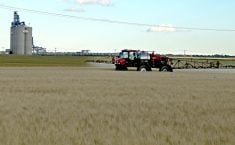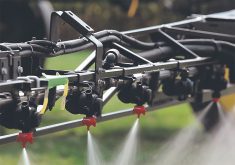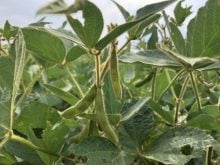Pesticide was deregistered from 1992-2001, and the process to ban the product began again in 2020 after a 2018 review
The loss of two-percent liquid strychnine for ground squirrel control shouldn’t have been a surprise.
The pesticide, registered in 1928, had already been deregistered from 1992 to 2001 over environmental concerns and a 2018 review found the same issues with the potential for secondary poisoning.
A 2020 decision to cancel strychnine’s registration for use was made after a regular re-evaluation of the product. Andrea Sawatzky, a pesticide compliance officer at Health Canada, said re-evaluation is done cyclically, about every 15 years unless a special review is required.
“We’re trying as best we can to prevent unacceptable risk,” she said.
Read Also

Gene editing digs deeper space in Canadian plant breeding
More Canadian research into crop variety development is incorporating gene editing, and one researcher notes that Canada’s regulatory approach to gene editing will help drive innovation
Things change, and that’s why regular reviews are done. Each year, the Pest Management Regulatory Agency issues a five-year work plan for these reviews and the 2023-28 plan should soon be published.
When a proposed decision document is released, a 90-day comment period follows.
Sawatzky said the fact it took two years to come out with the final decision on strychnine shows how many comments came in.
There were 9,280 written comments submitted, and while many argued to retain the poison, the federal government relied on studies and evidence to determine that the environmental risk was not acceptable. Species at risk were of particular concern.
There had been a 2007 interim mitigation measure in place, in which the use of strychnine was continued while a Richardson’s ground squirrel integrated pest management steering committee looked at alternatives.
And that was based on a 2005 document called Proposed Acceptability for Continuing Registration.
At that time, the PMRA proposed label changes so that risks could be mitigated.
These included taking care to avoid spilling bait on soil surfaces, collecting any spilled bait and disposing it by incineration or burial in a pit no less than 46 centimetres deep.
“All areas where the bait has been used must be monitored on a regular basis for dead animals. In the case of ground squirrels, monitoring must be done on a daily basis for the first week and on a weekly basis for several weeks thereafter,” said the document.
Sawatzky questioned how many who used strychnine actually did daily checks of the sites and properly disposed of spilled bait and carcasses. She showed photographs of PVC pipe, in snow, with strychnine bait.
She said in that example the strychnine wasn’t buried, which was against the label instructions, and still out in the snow in November when there are no ground squirrels running around.
“This also did not help the case for strychnine,” she said.
Some accidental poisonings were reported, including the deaths of dogs.
The 2018 document was issued to consider any new information since those 2007 interim measures, she said.
The final decision document in 2020 received 42 notices of objection to the planned phase-out: 39 were against and three wanted an immediate cancellation.
The phase-out went ahead. By March 4, 2021, the registrant could no longer sell it, a year later retailers could no longer sell it, and by this year farmers could no longer use it.
















